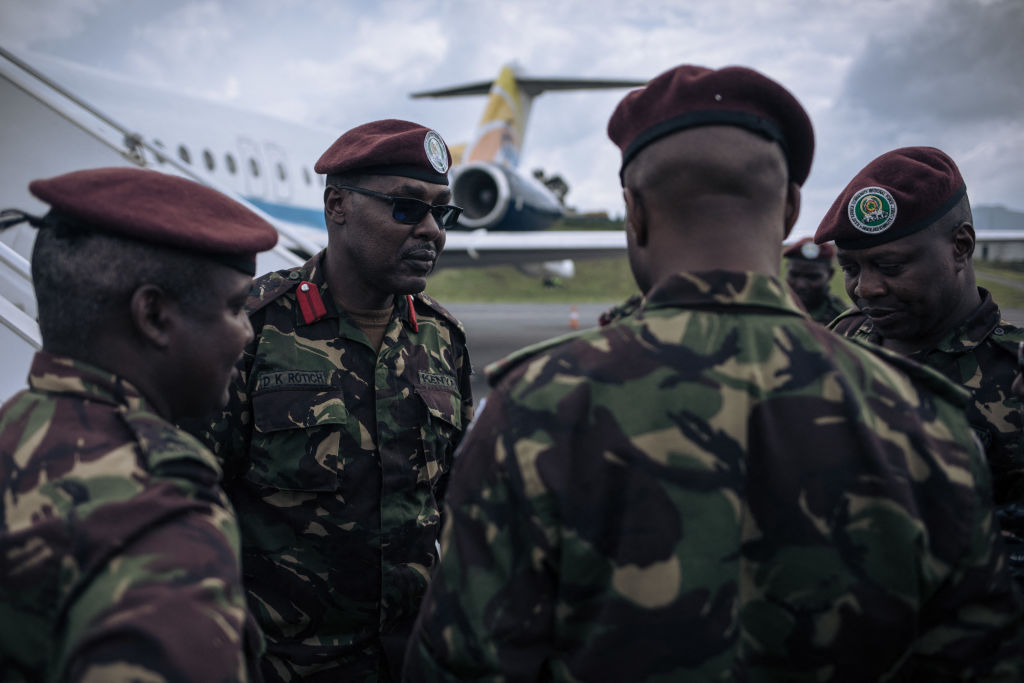ADF STAFF
As one regional force departs the eastern Democratic Republic of the Congo (DRC), another is arriving to take its place.
At the request of the Congolese government, the East African Community Regional Force (EACRF) has begun its withdrawal while the Southern African Development Community (SADC) is deploying to the chaotic battlefield that is the eastern DRC.
“EACRF will be handing over security responsibilities in eastern DRC to SADC forces,” the regional force said in a December 3 post on X, the platform formerly known as Twitter. “Elaborate plans have been put in place to ensure a smooth handover to the designated force that will enable continuity of the peace efforts in the region.”
DRC President Félix Tshisekedi announced on November 17 that SADC, a regional bloc of 16 countries, will deploy its force called SAMIDRC with the mission of supporting the Congolese army in combating the M23 rebels.
In an interview with French journalists, Tshisekedi accused Rwanda and its president, Paul Kagame, of causing the instability.
Rwanda vehemently denies the allegations. A government spokesperson said that the deployment of another regional force does not address the root cause of what she called a long-standing security and government failure by the DRC government.
Analysts, such as Delphin R. Ntanyoma, a visiting researcher at the University of Leeds, say the situation continues to grow in complexity. Ntanyoma recently noted some risks to SAMIDRC’s mission:
“It would primarily target M23 rebels, leaving out the other armed groups in eastern DRC,” he wrote in a November 24 article in The Conversation Africa. “It could give Rwanda more room to exploit the M23 rebel force.”
Ntanyoma worries that it would be a mistake to overlook the more than 120 other armed groups that operate in the East, some of which also perpetrate violence against civilians and stoke ethnic tensions.
He also noted that the M23’s claim of fighting for the protection of Congolese Tutsis is significantly different, and should be disassociated, from Rwanda’s desire to root out the remnants of groups responsible for the genocide in 1994.
Another concern is that a focus on military objectives neglects the potential for peace. The DRC government lambasted EACRF for its unwillingness to fight M23, but its mission was to oversee a cease-fire and facilitate negotiations.
Critics say that a purely military approach to addressing the violence in the eastern DRC would be ill-advised.
“The SADC force could end up being outnumbered in a vast region,” Ntanyoma wrote. “It runs the risk of having its efforts criticized just like those of the East African Community because of its limited capacity to tackle the underlying causes of violence in eastern Congo.”
Some Congolese believe the answers lie within the DRC, be they diplomatic or military.
“The DRC must maintain the idea that not a single foreign force will bring peace to the DRC,” Dr. Nkere Ntanda, a political science professor at the University of Kinshasa, told VOA’s Moses Havyarimana.
“The DRC will have to organize herself, to organize her army, to organize her security and all her forces to defend herself. So, SADC won’t make any difference at all.”

